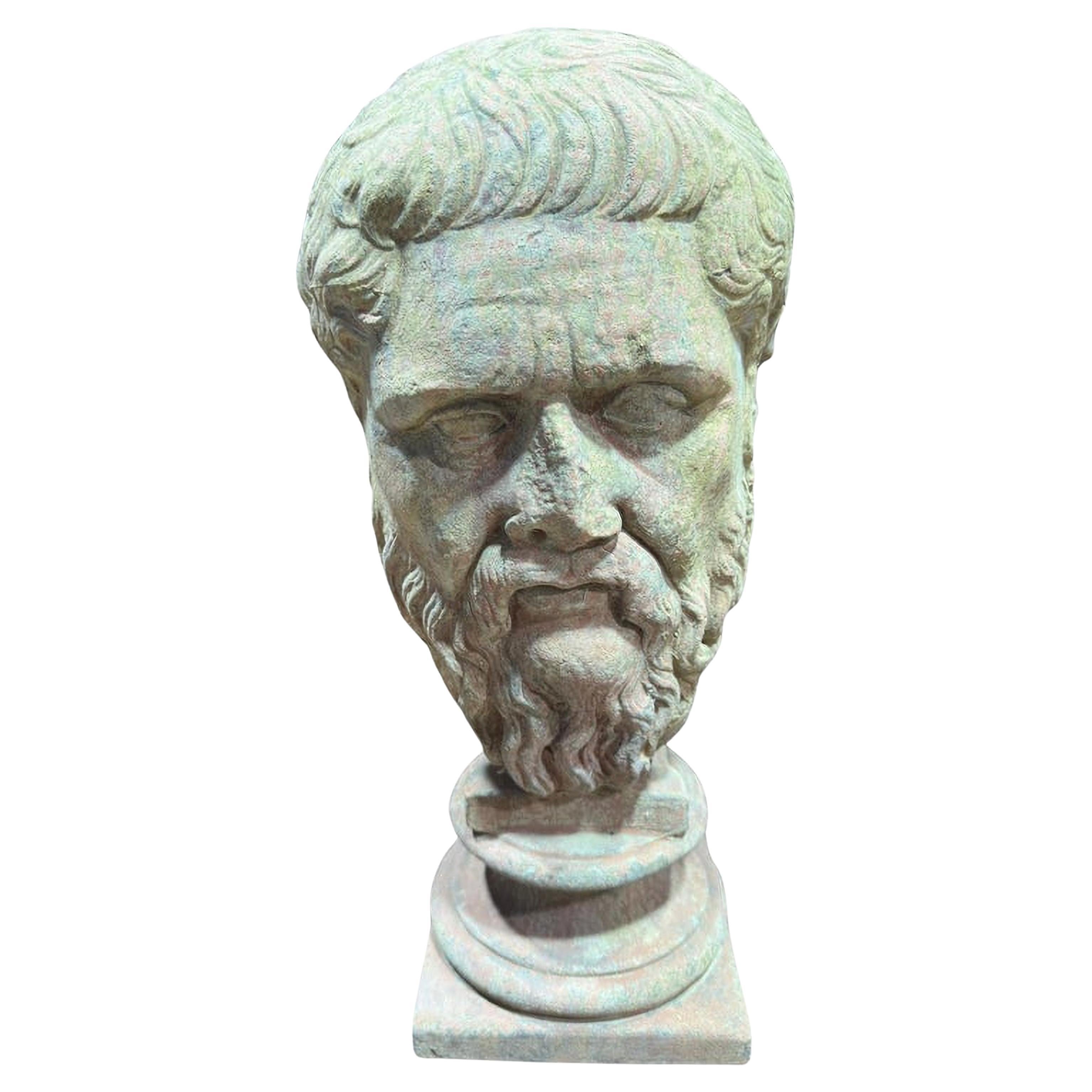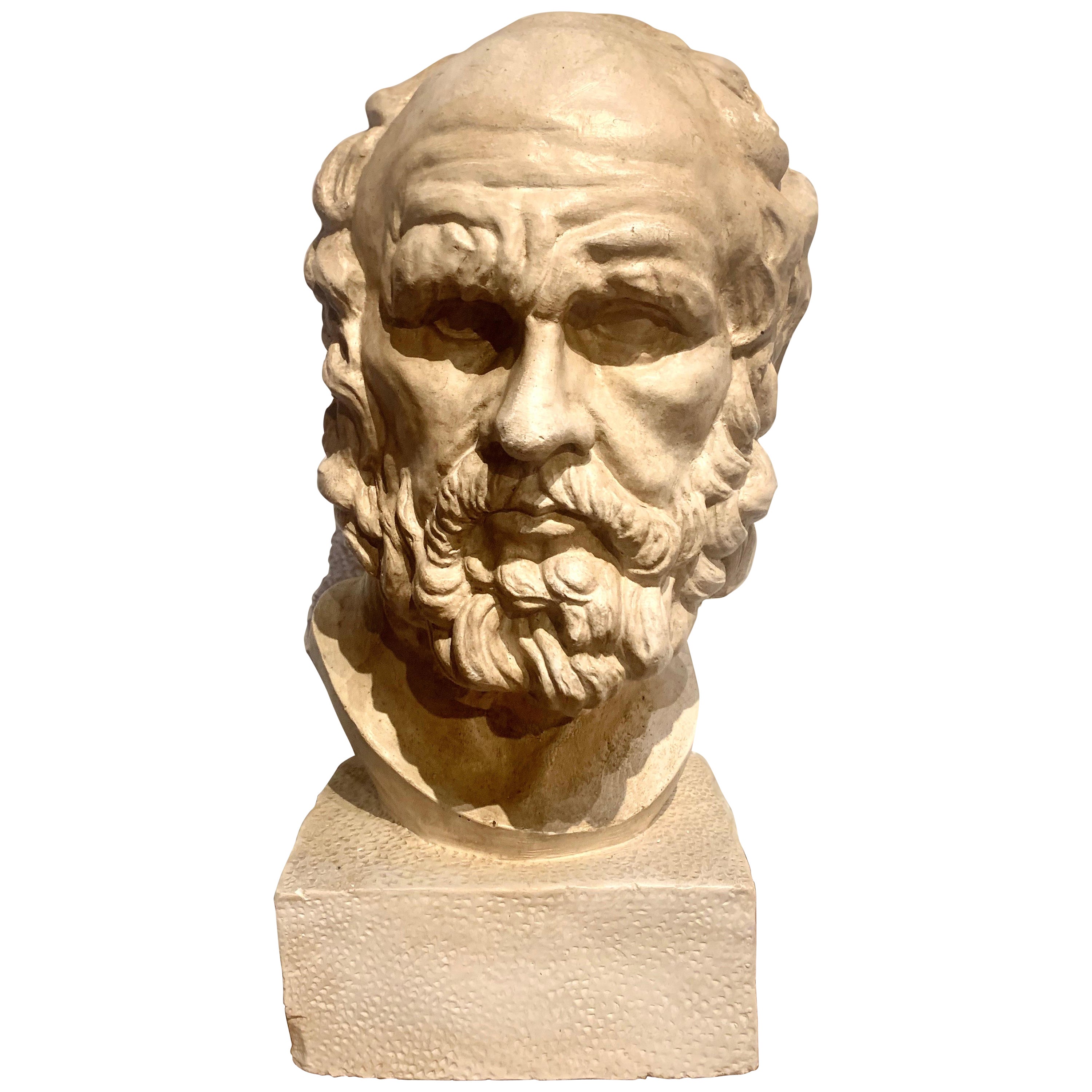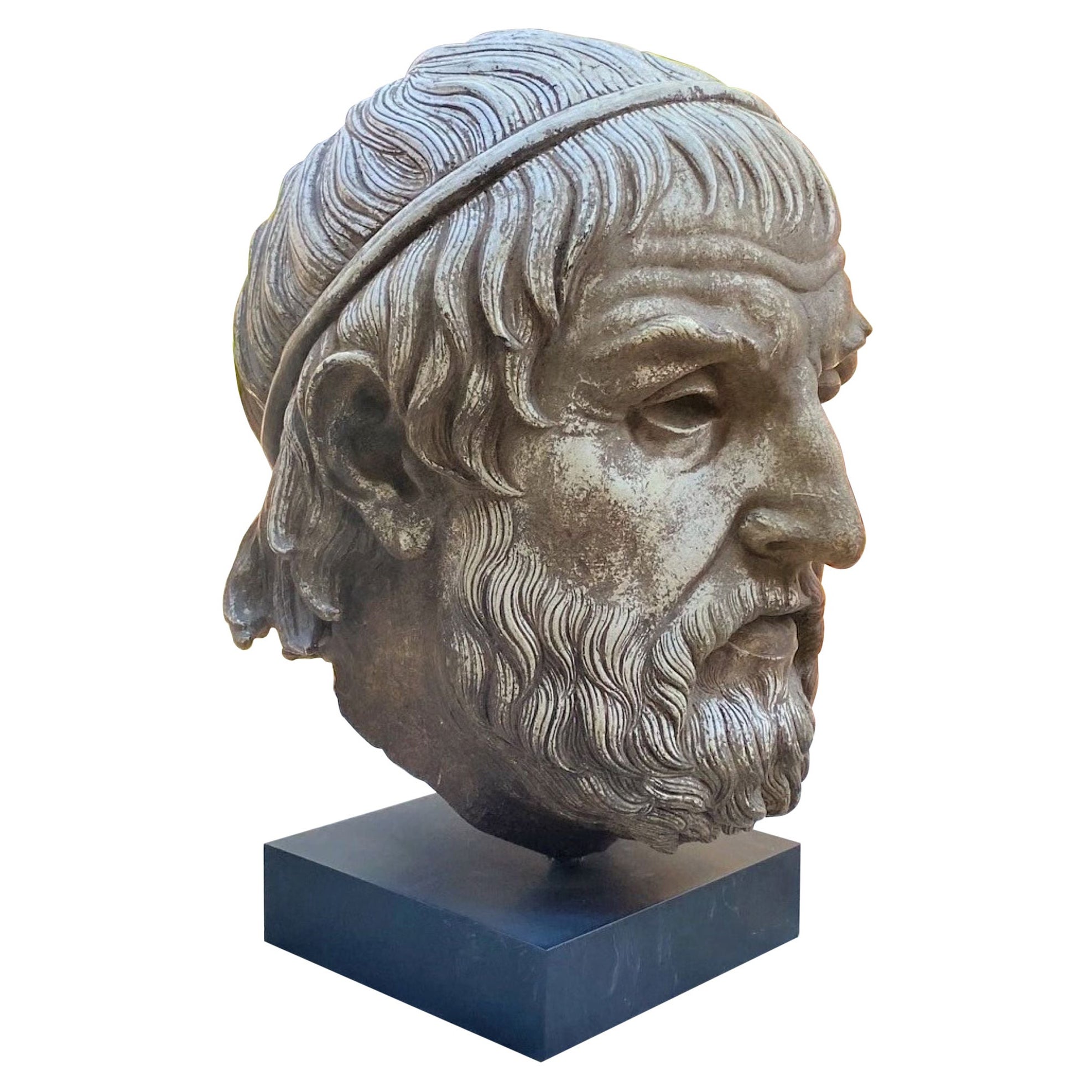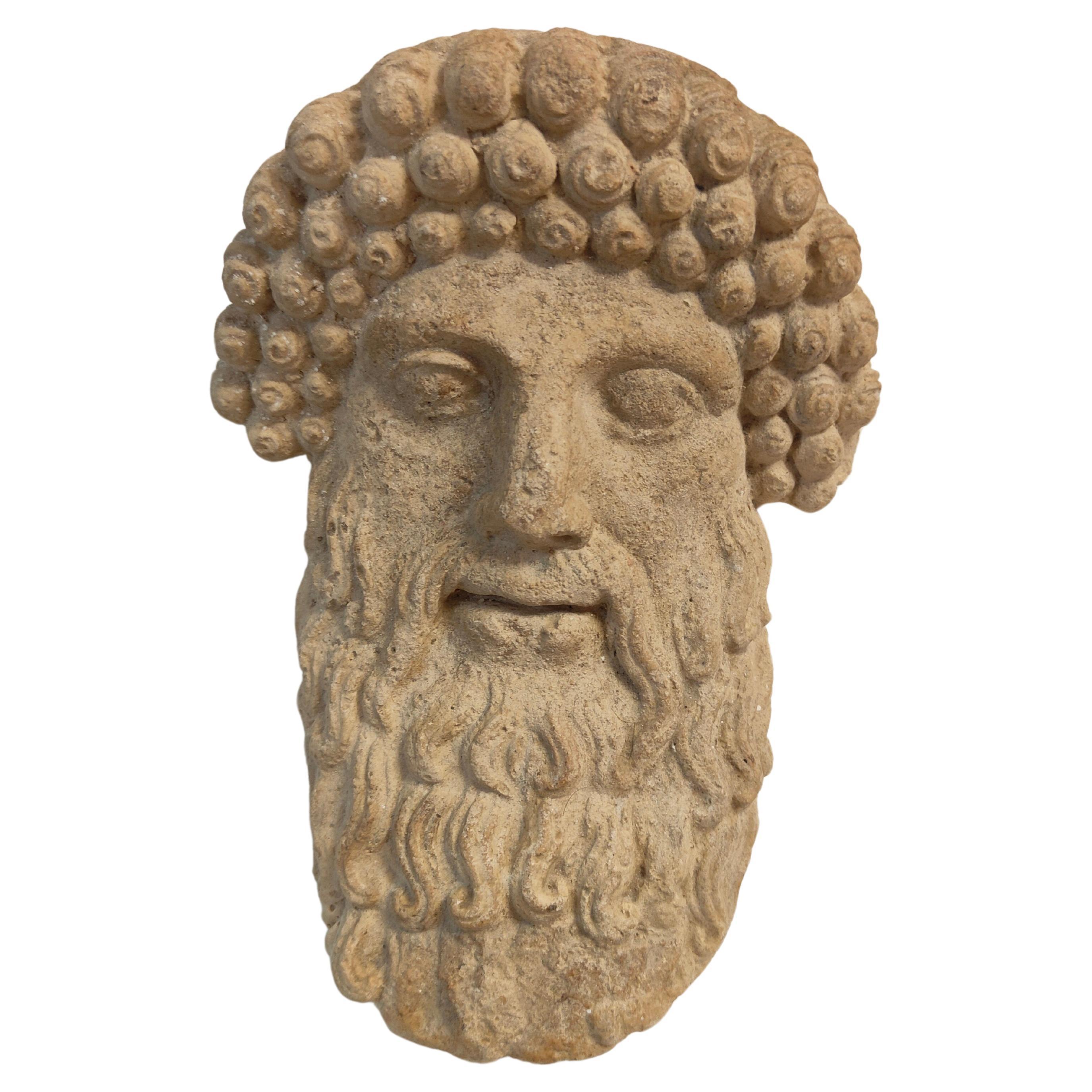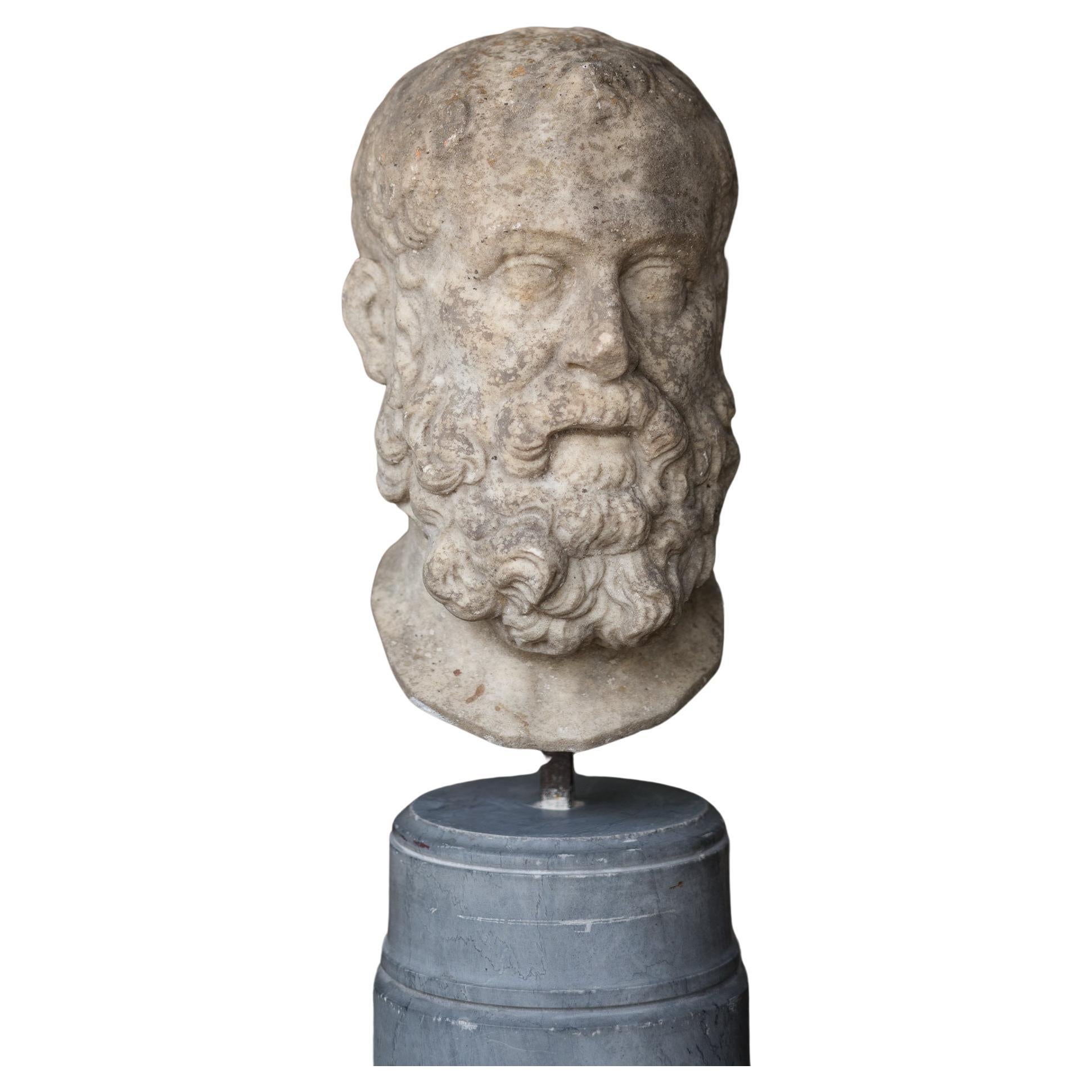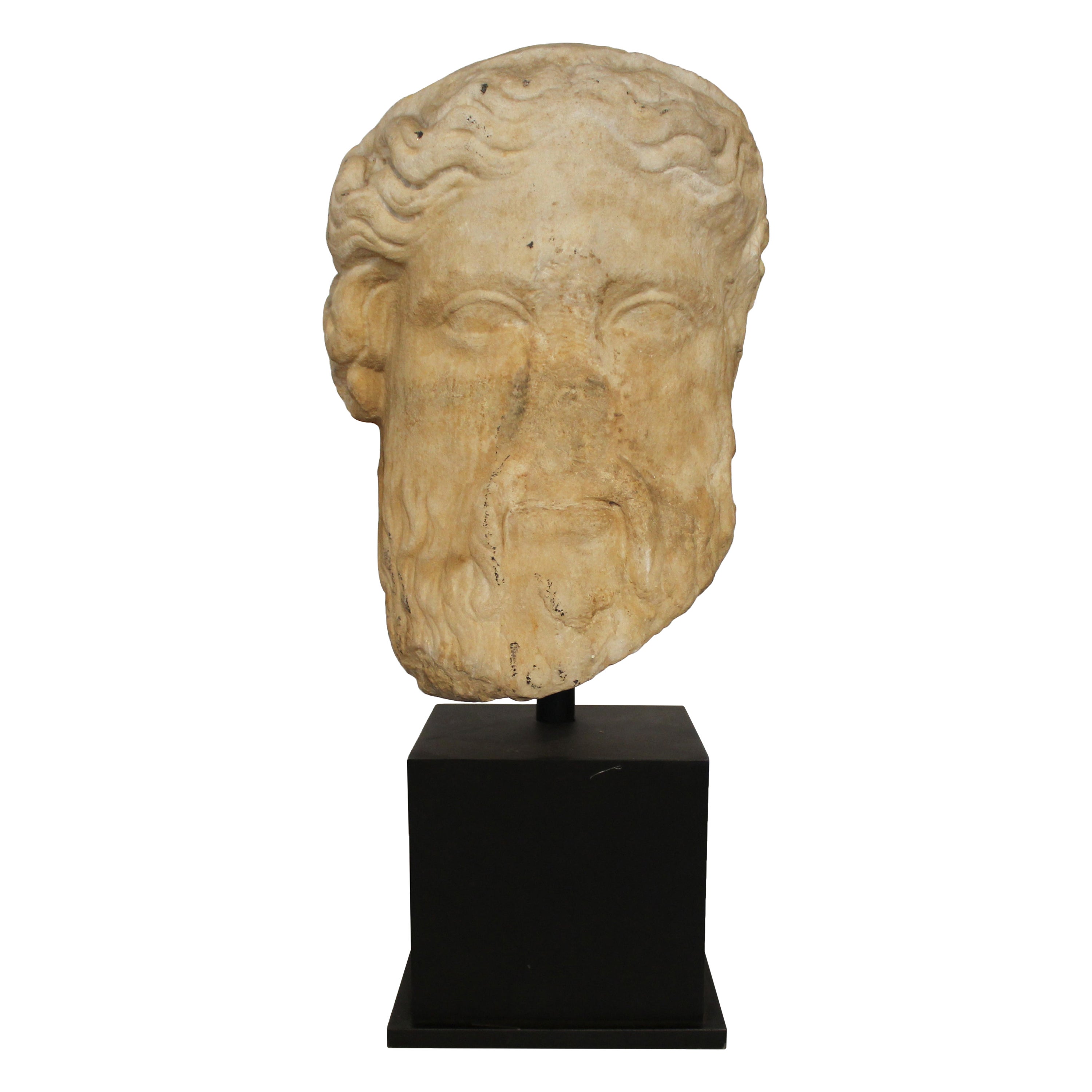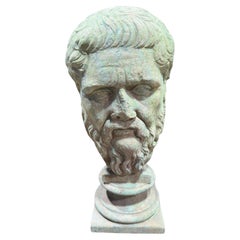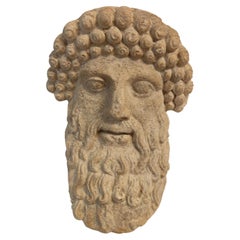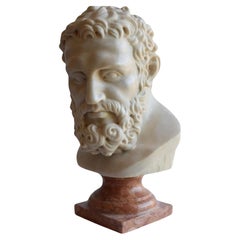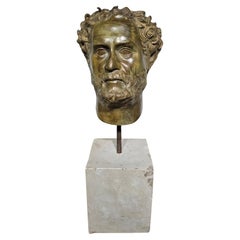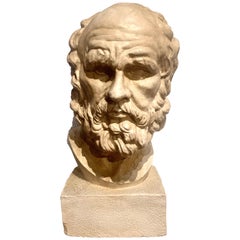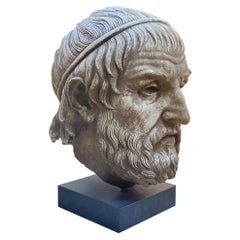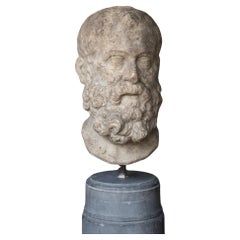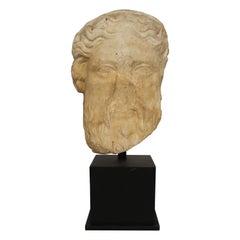Items Similar to HEAD OF PLATO IN TERRACOTTA FROM THE GLYPTOTHEK IN MUNICH 20th Century
Want more images or videos?
Request additional images or videos from the seller
1 of 6
HEAD OF PLATO IN TERRACOTTA FROM THE GLYPTOTHEK IN MUNICH 20th Century
$2,253.62
£1,680.17
€1,900
CA$3,095.01
A$3,463.93
CHF 1,808.71
MX$42,260.10
NOK 22,959.20
SEK 21,786.87
DKK 14,472.07
Shipping
Retrieving quote...The 1stDibs Promise:
Authenticity Guarantee,
Money-Back Guarantee,
24-Hour Cancellation
About the Item
HEAD OF PLATO IN TERRACOTTA FROM THE GLYPTOTHEK IN MUNICH 20th Century
H: 44cm x 20cm
Plato (Athens, 428/427 BC – Athens, 348/347 BC)
A terracotta copy of the famous artifact preserved in the Glyptothek in Munich.
Our Plato is a cast of the original preserved in this museum.
From the Boehringer Collection; purchased in Italy in 1930 and precisely in Lazio, in the archaeological site of Tusculum.
TUSCULUM: archaeological site (in Italian Tusculo or Tuscolo) is an ancient city in Lazio, whose foundation dates back to a pre-Roman era and whose history spans the Roman and medieval eras. It is located on the Alban Hills, in the Castelli Romani area. It was a city with notable buildings, embellished by a crown of gardens and villas, especially in its lower part, the one facing Rome
The Munich Glyptothek is one of the most important museums in Germany, located in Königsplatz 3 in Munich. It exhibits collections of ancient Greek and Roman art. It was opened in 1816.
Plato, son of Ariston of the deme of Collito (Athens, 428/427 BC – Athens, 348/347 BC), was an ancient Greek philosopher. Together with his teacher Socrates and his student Aristotle, he laid the foundations of Western philosophical thought.
He was born in Athens to aristocratic parents: his father Ariston, who boasted among his ancestors Codrus, the last legendary king of Athens, gave him the name of his grandfather, that is, Aristocles; his mother, Perictione, according to Diogenes Laertius descended from the famous legislator Solon.
His birth date is set by Apollodorus of Athens, in his Chronology, at the eighty-eighth Olympiad, on the seventh day of the month of Targellion, or at the end of May 428 BC. He had two brothers, Adeimantus and Glaucon, mentioned in his Republic, and a sister, Potone, mother of Speusippus, future student and successor, after his death, to the direction of the Academy of Athens.
It was another Ariston, a wrestler from Argos, his gymnastics teacher, who called him "Plato" (from the Greek πλατύς, platýs, meaning "broad") because of the width of his shoulders. In fact, Plato practiced pancratium, a type of wrestling and boxing.
Others give another derivation of the name, such as the width of the forehead or the majesty of the literary style. Diogenes Laertius, referring to Apuleius, Olympiodorus and Aelian, informs that he would have cultivated painting and poetry, writing dithyrambs, lyrics and tragedies, which would later have, together with mimes, a fundamental importance for the writing of his dialogues. According to Diogenes Laertius himself, there is a legend about his birth by Speusippus reported in the work The Funeral Banquet of Plato, according to which Plato would have actually been the son of the god Apollo, and therefore also the brother of Asclepius, "a doctor of the body, as Plato is of the immortal soul". According to this myth, Ariston, Plato's father, about to seduce Perictione would have had a vision of Apollo that would have dissuaded him from any physical relationship with the young woman, who would instead have become pregnant by the god, taken by his beauty. According to a later version, however, exposed by the unknown author of the Prolegomena, Plato is again compared to Asclepius but is called the son of Ariston. On the other hand, Speusippus, being the son of a sister of Plato, could not have failed to know that Plato was not the first but the third son of Perictione. Probably his aim was not to provide historical information on the birth of Plato, but to promote the mythification of the philosopher after his death and thus justify the cult that was paid to him in the Academy. The deification of Plato will continue in the Neoplatonic age, with some forms of excess as reported by Porphyry and Proclus, and will be remembered by the humanist Marsilio Ficino for the healing gift transmitted to him by Apollo.
- Dimensions:Height: 17.33 in (44 cm)Diameter: 7.88 in (20 cm)
- Style:Modern (Of the Period)
- Materials and Techniques:
- Place of Origin:
- Period:
- Date of Manufacture:20th Century
- Condition:Wear consistent with age and use. good condition.
- Seller Location:Madrid, ES
- Reference Number:1stDibs: LU5779241856392
About the Seller
4.8
Platinum Seller
Premium sellers with a 4.7+ rating and 24-hour response times
Established in 2005
1stDibs seller since 2021
362 sales on 1stDibs
Typical response time: 1 hour
- ShippingRetrieving quote...Shipping from: Madrid, Spain
- Return Policy
Authenticity Guarantee
In the unlikely event there’s an issue with an item’s authenticity, contact us within 1 year for a full refund. DetailsMoney-Back Guarantee
If your item is not as described, is damaged in transit, or does not arrive, contact us within 7 days for a full refund. Details24-Hour Cancellation
You have a 24-hour grace period in which to reconsider your purchase, with no questions asked.Vetted Professional Sellers
Our world-class sellers must adhere to strict standards for service and quality, maintaining the integrity of our listings.Price-Match Guarantee
If you find that a seller listed the same item for a lower price elsewhere, we’ll match it.Trusted Global Delivery
Our best-in-class carrier network provides specialized shipping options worldwide, including custom delivery.More From This Seller
View AllHEAD OF PLATO IN TERRACOTTA FROM THE GLYPTOTHEK IN MUNICH 20th Century
Located in Madrid, ES
HEAD OF PLATO IN TERRACOTTA FROM THE GLYPTOTHEK IN MUNICH 20th Century
H: 44cm x 20cm
Plato (Athens, 428/427 BC – Athens, 348/347 BC)
A terracotta copy of the famous artifact prese...
Category
20th Century Italian Modern Busts
Materials
Terracotta
Decorative Terracotta Head of a Greek God
Located in Madrid, ES
Enhance your collection with this exquisite decorative terracotta head of a Greek god, dating back to the early 1900s. This piece captures the timeless beauty and grandeur of ancient...
Category
Antique Early 1900s Figurative Sculptures
Materials
Terracotta
Italian Sculpture "Ercole" Head Begin 20th Century Marble
Located in Madrid, ES
Italian sculpture
"Ercole" head
Begin 20th century
Marble
Measure: H: 42cm including the base
Perfect condition.
Category
Early 20th Century Italian Baroque Busts
Materials
Marble
BRONZE HEAD of A GREEK PHILOSOPHER
Located in Madrid, ES
A decorative bronze head of a Greek philosopher, set on a solid marble base. This striking piece combines classical inspiration with modern craftsmanship, making it a perfect decorat...
Category
Vintage 1950s Figurative Sculptures
Materials
Bronze
Antique Greek God Face in Terracotta – Excellent Condition
Located in Madrid, ES
This remarkable antique face of a Greek god, crafted from terracotta or a similar material, is a stunning representation of classical artistry. With its intricate details and express...
Category
Vintage 1950s Wall-mounted Sculptures
Materials
Terracotta
Large Roman Bronze Emperor Bust from the 19th Century
Located in Madrid, ES
LARGE Roman bronze from the 19th century. Important bronze from the end of the 19th century roman signed S.V. The black marble base is later. Grand tour of Rome. Excellent condition ...
Category
Antique 19th Century Italian Baroque Figurative Sculptures
Materials
Bronze
You May Also Like
Early 20th Century Sculpture Plaster Bust of Platon
Located in Madrid, ES
An academy bust in plaster representing a Greek philosopher, possibly Platon, the bust has a high quality of execution and is slightly patinated.
Category
Mid-20th Century Spanish Grand Tour Busts
Materials
Plaster
Sculpture Cast Head Zeus God Bust Antique Mounted on Base Decorative Bibelot
Located in West Hollywood, CA
Sculpture Cast Head Zeus God Bust Antique Mounted on Base Decorative Bibelot . Bust inspired by Classic models . head mounted on a black base representing a bearded male character....
Category
Early 20th Century European Busts
Materials
Other
$2,160 Sale Price
24% Off
Seventeenth Century Carved Marble Bust Solon, 1820
Located in London, GB
A stunning Seventeenth Century Carved Bust of Solon
Mounted on an 1820 solid Bardiglio marble column.
Additional information:
Dimension: Height 165 cm (65 in)
Diameter 38 cm (15 in)
Category
Antique 19th Century Sculptures and Carvings
Materials
Abalone
Hermes Head Sculpture, 4th Century, Greece
Located in Girona, Spain
Hermes head sculpture.
Greek Bust representing Hermes.
Hermes is an Olympian deity, the God of Speed, in ancient Greek religion and mythology.
Sculpted whi...
Category
Antique 15th Century and Earlier Greek Classical Greek Busts
Materials
Stone, Marble, Metal
1940s Patinated Plaster Bust Greek Head
Located in Madrid, ES
An 1940s academy bust in plaster, patinated imitating terracotta, representing a head from the classical Greek world.
Category
Mid-20th Century Spanish Neoclassical Revival Busts
Materials
Plaster
Early 20th C. Italian Marble Bust of Homer, The Legendary Ancient Greek Poet.
Located in Los Angeles, CA
An elegant early 20th century Italian marble bust of Homer, the legendary ancient Greek poet traditionally credited as the author of the Iliad and the Odyssey—two foundational works ...
Category
Early 20th Century Italian Busts
Materials
Marble
More Ways To Browse
Artifacts 20th Century
20th Century Artifacts
20th Century Terracotta Sculpture
Terracotta Head
Cult Of Vintage
Roman Head Sculpture
Sculpture Head Terracotta
Greek Sculpture Heads
Doctor Office
Medieval Head
Terracotta Germany
Used Furniture Athens Greece
Ancient Roman Terracotta
Vintage Banquet
Vintage Furniture Athens Greece
Medieval Bust
Heal And Son
Plato Vintage
